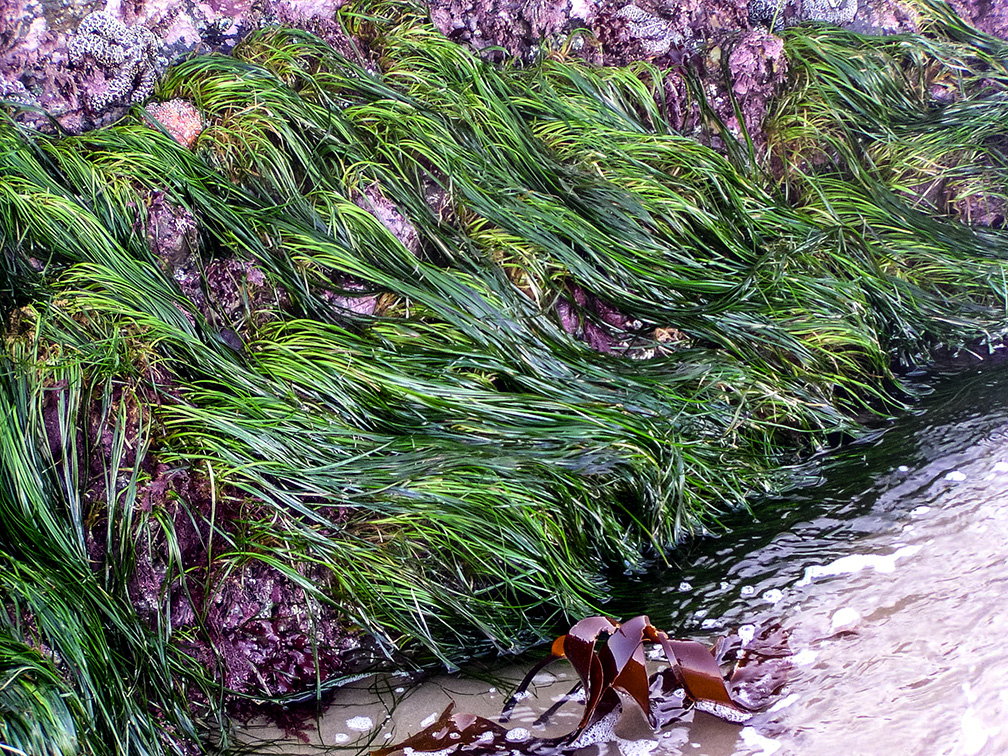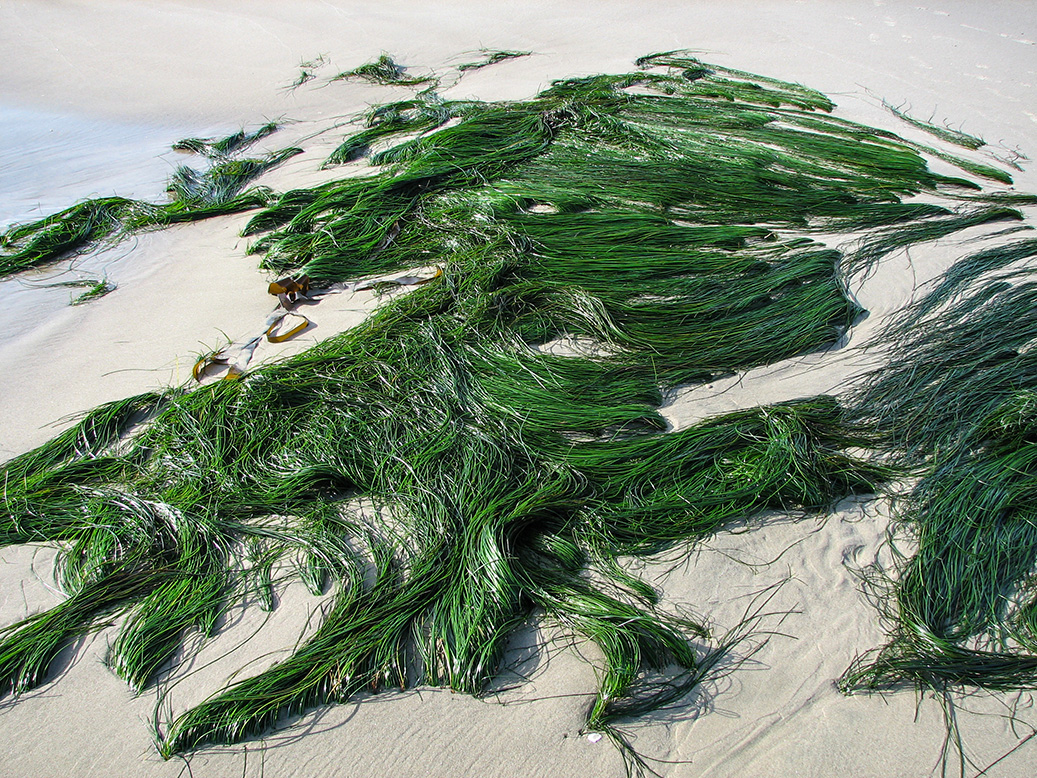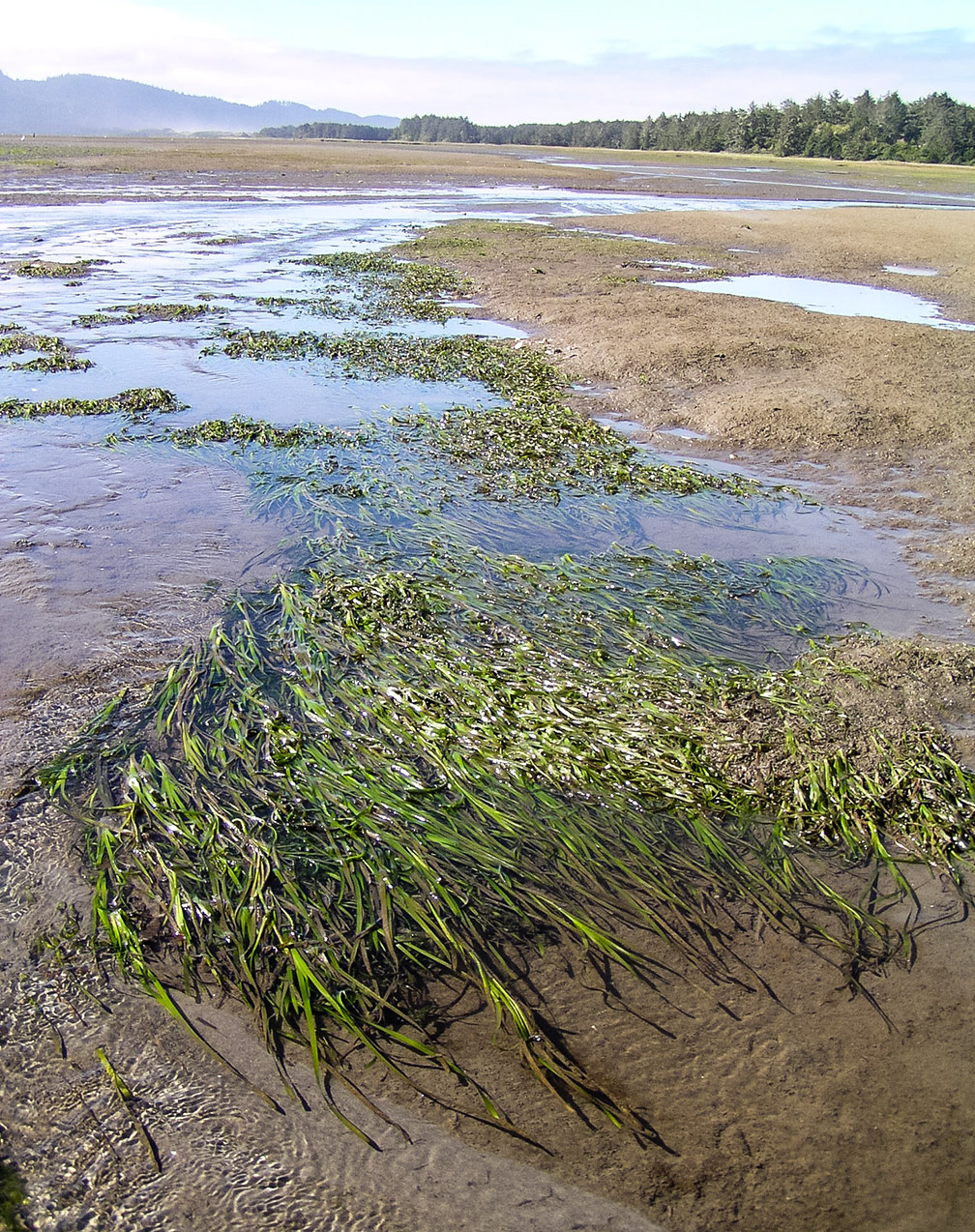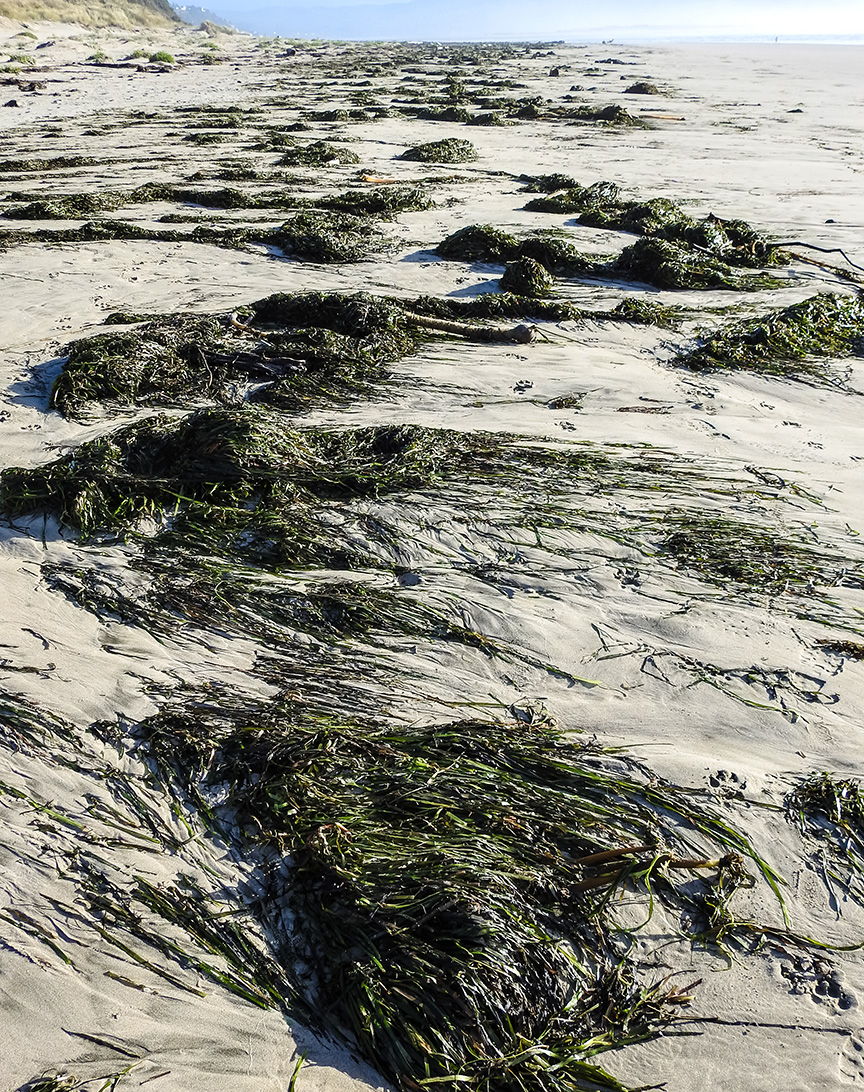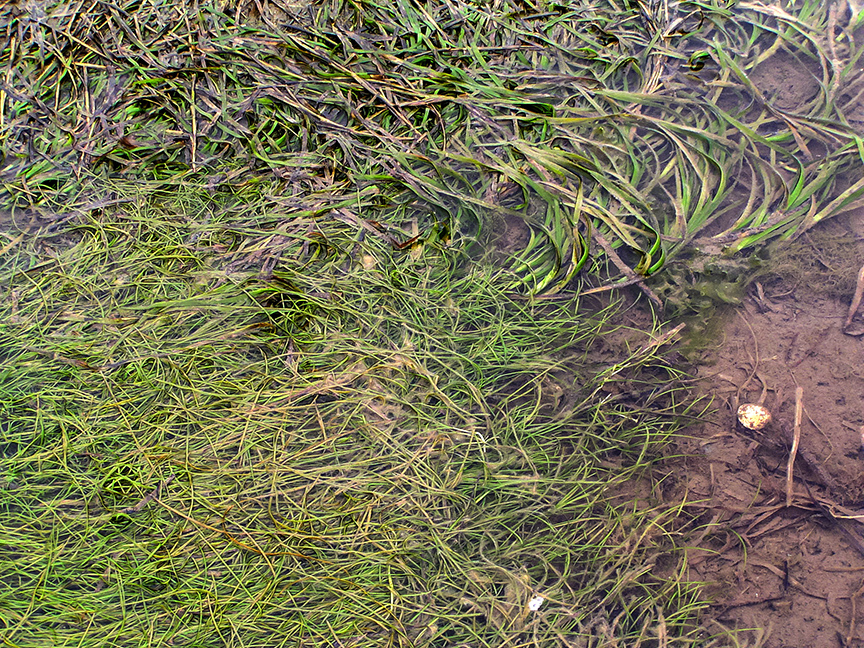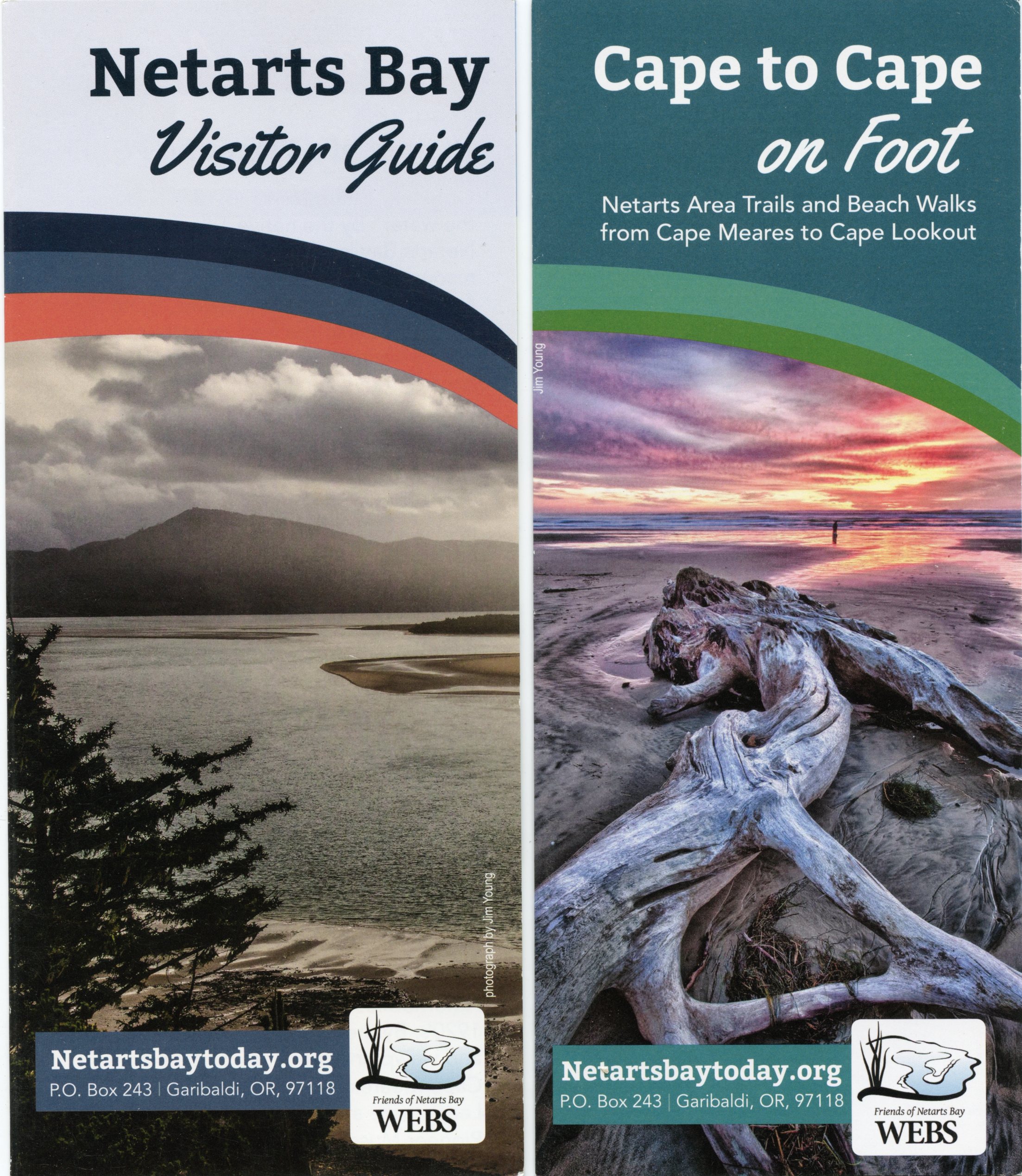Sponsored by the Friends of Netarts Bay Watershed, Estuary, Beach and Sea (WEBS)
Zostera (Zostera) marina
Native Eel Grass
Alaska to Baja California
Family Zosteraceae
Native
Eelgrass is one of the dominant and most important plants in Netarts Bay. There are two species of eelgrass in the bay, Zostera marina, a native, and Zostera japonica, an invasive species from Japan. Pictured are both, the larger native and the smaller invasive. Unlike most plants in the mudflats, eelgrass is not an alga or “seaweed.” Rather, it is a vascular plant, a monocot in the phylum Anthophyta and in the family Zosteraceae. Despite its common name, eelgrass, Zostera is not a true grass (true grasses are in the family Poaceae), but may be more closely related to lilies.
Eelgrasses mark the gradation from sea to wetland in Oregon's quiet bays and estuaries. They form dense beds that can cover acres of shallow bay bottom, their roots and rhizomes holding the sands and muds in place and providing both temporary and permanent homes for scores of associated plants and animals. Eelgrass beds are considered some of the most productive areas in estuaries, serving as a nursery for many invertebrates and fish.
Eelgrass is a primary producer that supplies and traps organic matter that provides food for animals and gives nutrients to algae. Primary productivity is a measure of the rate at which radiant energy (sunlight) is converted through photosynthesis by green plants to organic carbon - carbon that can then be used as food by both the plants and other organisms (see footnote). Primary productivity of Zostera marina has been measured at 1450 grams of carbon per square meter per year, almost as much as a field of alfalfa. In addition to making food, eelgrass furnishes shelter, protection, and a safe place to live to other organisms. During storms, Z. marina will break loose from the beds in Netarts Bay, wash into the ocean on the outgoing tide, and come ashore with the waves to the beach between Netarts and Oceanside in jumbled heaps and rows.
1 This is a limited definition that ignores chemosythesis
